Click on images to enlarge
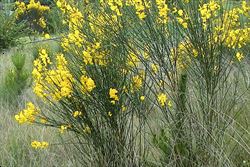
infestation (Photo: Jackie Miles and Max Campbell)
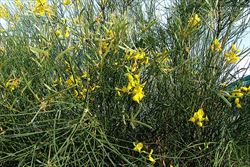
habit (Photo: Sheldon Navie)

stems (Photo: Sheldon Navie)
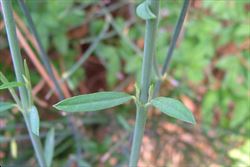
younger stem with inconspicuous leaves (Photo: Sheldon Navie)

flower clusters (Photo: Sheldon Navie)
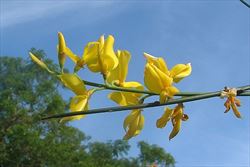
elongated flower cluster (Photo: Sheldon Navie)
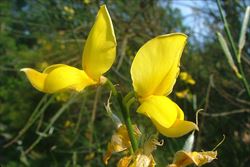
close-up of the bright yellow pea-shaped flowers (Photo: Sheldon Navie)
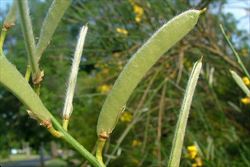
hairy immature fruit (Photo: Sheldon Navie)

mature fruit (Photo: Sheldon Navie)
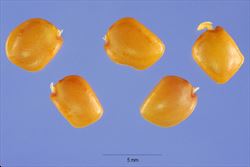
close-up of seeds (Photo: Steve Hurst at USDA PLANTS Database)
Scientific Name
Spartium junceum L.
Family
Fabaceae (Queensland, the ACT, Victoria, Tasmania and the Northern Territory)Fabaceae: sub-family Faboideae (New South Wales)Leguminosae (South Australia)Papilionaceae (Western Australia)
Common Names
genet, Spanish broom, weaver's broom
Origin
Native to northern Africa (i.e. Algeria, northern Libya, Morocco and Tunisia), the Azores, southern Europe (i.e. France, Portugal, Spain, Albania, Greece, Italy and Yugoslavia) and western Asia (i.e. Israel, Lebanon, western Syria, Turkey, Armenia, Azerbaijan and Georgia).
Naturalised Distribution
Widely naturalised in south-eastern Australia (i.e. in the coastal districts of southern New South Wales, in Tasmania and in parts of south-eastern and southern South Australia). Also naturalised in south-eastern Queensland and sparingly naturalised in southern Victoria. It is possibly also naturalised in the ACT and south-western Western Australia.
Naturalised overseas in western USA (i.e. California, Oregon and Washington), New Zealand and Hawaii.
Notes
Spanish broom (Spartium junceum) is commonly grown as a garden ornamental, particularly in the cooler parts of Australia. It has escaped cultivation and is regarded as a minor environmental weed or potential environmental weed in Victoria, South Australia and the ACT. Spanish broom (Spartium junceum) has been recorded growing in conservation areas in South Australia (i.e. Cleland Conservation Park) and Victoria (i.e. Kinglake National Park).
This species is also naturalised in scattered localities throughout the coastal parts of California, in the USA. In these areas it is somewhat invasive, spreading aggressively in waste places and along roadsides.

